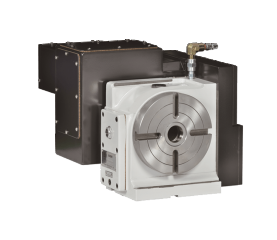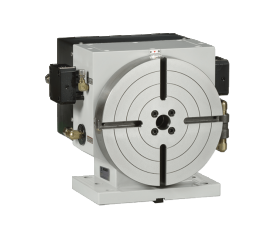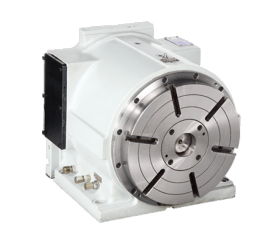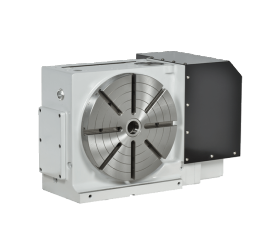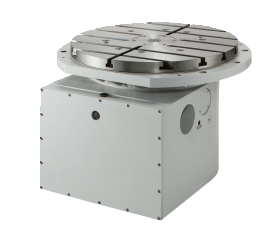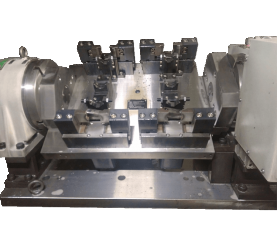Understanding Worm Gears: Diagrams, Threads, and Lead Angles

Worm gears are fundamental components in mechanical systems, known for their ability to transmit power at right angles and provide high reduction ratios. Their unique design makes them ideal for applications requiring precise positioning and smooth operation.
In conjunction with indexing tables, worm gears play a critical role in advanced manufacturing processes, enhancing the accuracy and efficiency of various machinery. This article aims to comprehensively understand worm gears, focusing on diagrams, thread types, lead angles, and their integration with indexing tables.
What Are Worm Threads?
Worm threads are the helical structures on the worm gear that engage with the teeth of the mating gear, known as the worm wheel. The design and structure of these threads are crucial for the gear’s performance. There are different types of worm threads, each affecting the gear's efficiency and application suitability.
Types of Worm Threads
Worm threads are an essential feature of worm gears, with different types playing crucial roles in various mechanical applications. Here's an elaboration on the types of worm threads:
- Single-Start Threads
- Description: Single-start threads consist of one continuous helical thread wrapped around the worm. This type allows for a simple yet precise engagement mechanism.
- Advantages: Single-start threads are renowned for their precision. They offer exceptional control over the movement, making them perfect for applications that require fine adjustments. This precise control ensures minimal backlash and maximizes the accuracy of the gear system.
- Advantages: Single-start threads are renowned for their precision. They offer exceptional control over the movement, making them perfect for applications that require fine adjustments. This precise control ensures minimal backlash and maximizes the accuracy of the gear system.
- Double-Start Threads
- Description: Double-start threads feature two separate threads that start 180 degrees apart. This design doubles the thread leads, allowing the worm to move the mating gear twice the distance for each revolution compared to a single-start.
- Advantages: The primary benefit of double-start threads is their ability to provide faster engagement with the worm wheel. This quicker engagement results in increased operational speed and enhanced load capacity, making them suitable for applications requiring rapid movements and higher efficiency.
- Applications: Double-start threads are ideal for applications where both speed and load are higher. Examples include conveyors, elevators, and other machinery where quick movement and high load capacity are necessary. They strike a balance between speed and precision, making them versatile for medium precision applications.
- Triple-Start Threads
- Description: Triple-start threads have three separate threads evenly spaced around the worm. This configuration triples the contact points and leads, further increasing the speed and load capacity.
- Advantages: Triple-start threads enhance the worm gear's load capacity and speed more significantly than double-start threads. They allow for even quicker engagement and higher throughput in operations.
- Applications: Due to their complexity and cost, triple-start threads are typically used in high-performance applications where maximum efficiency and load capacity are paramount. They are common in heavy industrial machinery and systems that require robust performance, such as in large industrial mixers, mining equipment, and heavy-duty lifting gear.
Manufacturing and Maintenance Considerations
- Complexity: As the number of starts increases, so does the complexity of manufacturing and maintaining these worm gears. Single-start threads are easier to produce and maintain compared to double and triple-start threads, which require more precise machining and alignment.
- Cost: The manufacturing cost also escalates with the complexity of the thread. Single-start threads are generally more cost-effective than their multi-start counterparts.
Impact on Gear Performance
The type of worm thread significantly impacts the gear’s efficiency and the smoothness of power transmission. Due to their fine control, single-start threads are excellent for precision applications like indexing tables. In contrast, double and triple-start threads are beneficial for higher speed and load-bearing applications. The relationship between worm threads and gear performance is pivotal, particularly in indexing tables where accurate positioning and smooth operation are crucial.
Worm Gear Lead Angle and Its Significance
The lead angle of a worm gear is the angle between the helix of the worm thread and a plane perpendicular to the axis of rotation. This angle is critical in determining the gear's efficiency and load-carrying capacity.
- Friction: A smaller lead angle generally results in higher friction, leading to greater wear and lower efficiency. Conversely, a larger lead angle reduces friction, enhancing efficiency but potentially reducing load capacity.
- Efficiency: Worm gears with an optimal lead angle offer better efficiency due to reduced friction. This is particularly important in indexing tables, where precision and smooth operation are paramount.
- Load Capacity: The lead angle also affects the gear's ability to carry loads. A carefully calculated lead angle ensures the gear can handle the required loads without compromising performance.
Calculating the Optimal Lead Angle
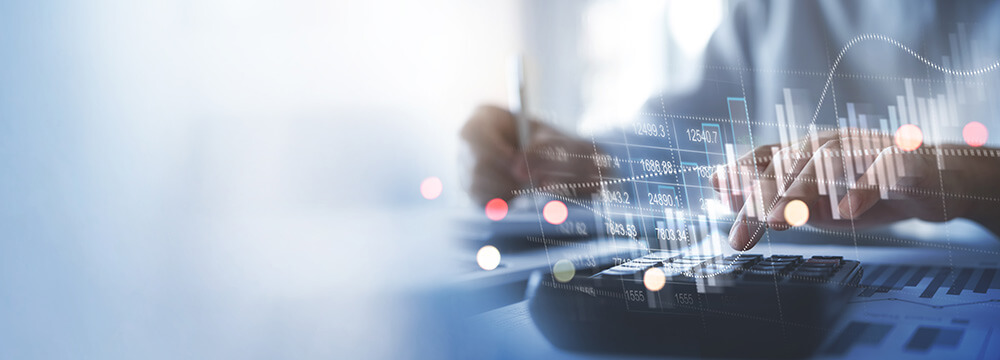
The lead angle, λλ, of a worm gear is a critical factor that influences the gear's efficiency, operational smoothness, and load capacity. Here's a detailed explanation on how to calculate the optimal lead angle and its implications in practical applications:
Formula for Calculating Lead Angle
The formula for calculating the lead angle is:
λ=tan−1(πDL)λ=tan−1(LπD)
Where:
- LL is the lead of the worm, which represents the distance the thread advances along the worm in one complete revolution.
- DD is the pitch diameter of the worm.
This formula helps in determining the angle at which the thread of the worm advances around its cylinder, a crucial aspect for ensuring efficient and reliable gear operation.
Practical Examples and Calculations
To illustrate, consider a worm gear where:
- The lead L is 10 mm,
L - The pitch diameter D is 50 mm.
D
Plugging these values into the formula gives:
λ=tan−1(π×5010)λ=tan−1(10π×50)
This calculation will yield a lead angle that optimizes the balance between friction and efficiency. The resulting angle can then be used to guide the design and manufacturing of the worm gear to ensure it meets specific performance requirements.
Significance of Lead Angle in Indexing Tables
Integration of Worm Gears with Indexing Tables
Worm gears are a popular choice in indexing tables due to their ability to deliver smooth and precise rotational movements. The design and calculated lead angle of the worm gear are vital for achieving the required precision and reliability in applications such as CNC machines and automated assembly lines.
Advantages of Proper Lead Angle in Worm Gears
- Improved Load Capacity: A well-calculated lead angle allows worm gears to handle significant loads efficiently. This capability is particularly beneficial for indexing tables that need to support and precisely position heavy workpieces without sacrificing operational integrity.
- Enhanced Precision: The accuracy of the lead angle directly affects the positioning precision of worm gears. A precise lead angle ensures that single-start worm threads provide the fine control needed for manufacturing processes requiring stringent accuracy levels.
- Smooth Operation: The correct lead angle facilitates continuous and smooth engagement between the worm threads and the worm wheel teeth. This smooth operation is crucial for minimizing wear and extending the lifespan of the gear components. It also reduces operational noise and vibration, contributing to more stable and reliable machinery.
Applications and Advantages of Optimized Worm Gear Design
Industry Applications
Optimized worm gears are integral to a variety of sectors where precision and reliability are paramount. Their unique design features make them suitable for specialized applications across several industries:
- Automotive Steering Systems
- Precision and Smoothness: Worm gears play a crucial role in automotive steering systems, where they provide precise control and smooth operation. Their ability to smoothly transfer motion and force at varying angles is essential for the responsive steering that modern vehicles require.
- Conveyors
- Efficiency and Load Handling: In conveyor systems, worm gears ensure efficient power transmission while handling high loads, which is vital for the continuous transport of goods across various distances. Their robustness and ability to sustain the stress of constant operation make them indispensable in large-scale industrial environments.
- Lifting Equipment
- Reliability Under Load: Worm gears are favored in lifting equipment, such as cranes and hoists, for their reliable performance under heavy loads. They offer enhanced safety and stability, which are critical in operations involving the lifting and positioning of heavy materials.
Advantages of Indexing Tables with Optimized Worm Gear Design
The integration of optimized worm gears into indexing tables brings several significant advantages, enhancing the overall functionality and efficiency of these systems:
- Increased Durability
- Maintenance and Longevity: Optimized worm gears contribute to the increased durability of indexing tables. Their robust construction and ability to handle the demands of continuous operation reduce wear and tear, thereby extending the lifespan of the entire system. This translates into lower maintenance costs and less downtime, optimizing operational efficiency.
- Reduced Noise
- Quiet Operation: The precision with which worm gears engage reduces vibration and operational noise, a crucial benefit in environments where noise reduction is essential. This smoother operation is not only more pleasant but also contributes to the longevity of the machinery by minimizing the stress on its components.
- High Shock Load Capacity
- Handling Impacts: Worm gears are designed to withstand high shock loads, making them suitable for applications that involve sudden, heavy impacts. This capability ensures that the indexing tables remain operational and accurate, even under challenging conditions, providing reliability where it is most needed.
Conclusion
Precision in designing and manufacturing worm gears is crucial for maximizing performance and efficiency, especially in applications involving indexing tables. A detailed understanding of worm gear diagrams, thread types, and lead angles can significantly enhance the functionality of mechanical systems.
Manufacturers and engineers should consider upgrading or designing new gear systems with advanced, precision-engineered worm gears to improve operational efficiency and product quality.
For further consultation or to explore available solutions, reach out today to see how HOSEA can assist in achieving technical excellence in your gear projects with specialized solutions integrating worm gears and indexing tables.



